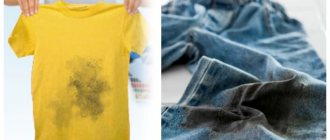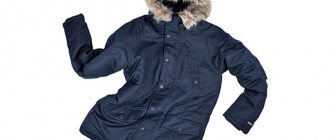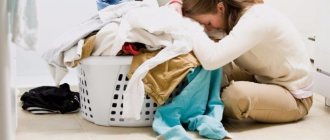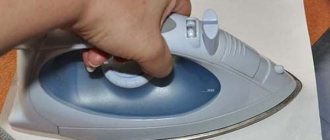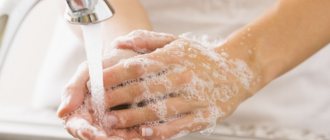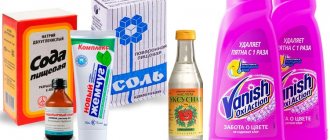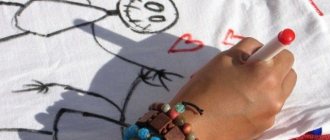Antistatic for clothing is designed to eliminate static electricity, which is formed due to dry air or contact of fabric with various objects. At the same time, things deteriorate in appearance, they lose their shape, stick to the skin, and a person feels discomfort while wearing them. Synthetic products are most susceptible to this. When an antistatic agent is applied to fabric, a film is formed that reduces friction between the fibers. You can buy this product or prepare it yourself at home.
Features of using purchased products
They are produced in the form of sprays and rinses. The most convenient way to use an antistatic agent for clothing is in the form of a spray, but many of them have an unpleasant odor. Anti-electrification products are produced based on alcohol, glycerin, and water (safer). Here are the most effective:
- Lyra;
- Lana;
- Bugs;
- Chirton.
Fabric softeners with a pleasant aroma have a similar effect. Can be used for rinsing clothes in an automatic machine or after hand washing:
- Vernel;
- Lenor;
- Minel Flower Feeling;
- Eared Nanny;
- Meine Liebe.
Some antistatic agents often cause allergies, so many housewives make antistatic agents themselves.
How to choose the best?
Before purchasing an antistatic agent for washing, you need to pay attention to the following points:
Compound. An antistatic agent may contain: surfactants, silicones, alcohols, acids, glycerin.
The fewer aggressive components on this list, the better. Be sure to pay attention to fragrances and fragrances. Many people prefer products that do not give off an extraneous odor.- Method of use . Conditioners are added to the washing machine immediately during washing. Things are treated with sprays and aerosols after completion.
- Secondary functions . In addition to removing static electricity, many antistatic agents have an additional effect on the fabric: they whiten or preserve the color of things, making them softer.
- What products will it be used for? There are products intended only for caring for children's things.
They contain a reduced level of surfactants and contain a minimum of fragrances, which reduces the risk of developing allergies. Children's products should not contain components such as: A-terpineol (affects the nervous system), ethanol (impairs brain function), benzyl alcohol (can cause nausea and dizziness), linalool (impairs coordination of movements). - Price. The price depends on the manufacturer of the antistatic agent. Eco-friendly products are more expensive than conventional ones.
Top 3 popular remedies
The most popular antistatic agents for washing that are in demand among consumers:
Lenor Scandinavian spring
This is an inexpensive fabric softener that has the ability to remove static electricity. This gel can only be used to care for adult clothing.
It contains:
- cationic surfactants,
- aldehyde,
- flavorings,
- linalool.
For highly electrified fabrics, you will need 140 ml of antistatic agent for every 5 kg of laundry (1 measuring cup + 1/3 cup). For ordinary things, 110 ml (1 measuring cup) is enough.
For washing diapers and undershirts, choose Lenor for children, with an adapted composition. The cost of 1 liter is about 120 rubles .
Eared nanny
This product is intended for children's things :
- does not contain dyes,
- softens linen,
- contains Aloe vera,
- passed all the necessary dermatological tests,
- does not cause allergies.
For hand washing, 1 cap (45 ml) is required for every 10 liters of water. For machine washing, take 2 measuring caps (90 ml) for every 4-5 kg of laundry. The cost of 750 ml of the product is about 80 rubles .
Synergetic
This biodegradable laundry detergent with an antistatic effect has an environmental certificate of conformity of the Russian Federation.
It contains:
- structured water,
- silver ions,
- plant complexes,
- flavorings based on natural oils,
- food coloring.
For every 5 kg of laundry you will need 30 ml of conditioner, so 2.75 liters is enough for 90 washes. Its cost is 230 rubles .
How can I replace antistatic agent for clothes?
Anyone can make an antistatic agent with their own hands from homemade products. The base is water, which is mixed with additional ingredients: salt, soda, lemon juice and others. Sometimes products are combined with each other to achieve a more lasting effect.
Antistatic agents prepared by hand do not contain harmful substances, so such products do not cause allergies.
Vinegar
It prevents the accumulation of static electricity on things, removes powder and soap well, gives products freshness, softness, and maintains the brightness of the material. It is recommended to add the product to water while rinsing clothes. You can prepare the solution in three ways:
- Dissolve 100 ml of vinegar 9% in 5 liters of water.
- Stir 3 tbsp. vinegar, 6 tbsp. water and 2 tbsp. any hair conditioner.
- Mix 6 tbsp. soda and 1 tbsp. vinegar.
It is recommended to add the resulting products to the washing machine as a conditioner or soak the laundry in it after hand washing. If the smell of vinegar is too strong, just mix it with baking soda and add a couple of drops of your favorite essential oil.
Try making an antistatic spray at home. Water (1 liter) with a teaspoon of apple cider vinegar is poured into a spray bottle. Spray the product directly onto the item of clothing. Some housewives add material softeners to the solution.
Salt
For those who do not know how to make antistatic at home, a simple method will do. The water in which clothes are rinsed is sometimes replaced with a saline solution prepared at the rate of a teaspoon of salt per ten-liter bucket of water.
You can spray the resulting product on things. The effect is no different from a household antistatic agent.
Lemon water
If there is no antistatic agent, to remove the electrification of things, you can add the juice of half a lemon or citric acid powder (1 tsp per 10 liters of water) to cold water. You can pour it into the washing machine compartment, where conditioner is usually added.
Lemon antistatic agent can be used as a clothing spray. Thanks to this method, the problem of static discharges will be solved, things will become fresher, and acquire a pleasant citrus aroma.
Hair conditioner
Many people have no idea what to replace the antistatic agent with. The following remedy is prepared: 3 tbsp. 9% vinegar, 6 tbsp. cold water and 2 tbsp. hair softening liquids. The product will prevent the formation of static charges. 100 ml of the resulting composition is poured into the washing machine.
Fabric softener
If you use this household chemical, things become soft and get rid of unpleasant odors and static charges. You need to dilute fabric softener in water, stir, and spray ironed items with a spray bottle.
The resulting antistatic agent is also suitable for pile coverings.
Dry soap
It can be used instead of antistatic agent for clothing. Rub soap on the inside of a piece of clothing. The effect of the product lasts approximately 2 days. Before applying, you should try to process a small piece of the material to check whether the soap is translucent or not. You can always carry a small piece of soap with you and, if necessary, process things.
Hair fixation spray
At home, commercial antistatic agent can be replaced with hairspray, since it also eliminates static electricity. The varnish should be colorless, without glitter. The product is sprayed at a distance of 30-40 cm from the product. You should keep the bottle away from your face, as the varnish has an unpleasant aroma.
You should be careful when spraying silk items as the polish may leave marks on them.
Body cream or lotion
Many people do not know that a daily body wash is suitable as an antistatic agent. This is especially true in the summer, when dresses stick to the skin. The feet are lubricated with a face or body cream with a moisturizing effect, as a result of which they are covered with a thin film. This prevents friction.
Metal object
Any metal removes charges of static electricity, but the effect after it is short-lived. It is enough to hold any metal object over the product.
Champs Elysees Eau de Parfum by Guerlain. The fragrance of Parisian spring
The fragrance, dedicated to one of the main attractions of Paris - the Champs Elysees - was released back in 1996 and remains relevant to this day. Transparent, floral and fruity, it is built around the note of almond, found in various forms in all three steps of its pyramid. Starting with the sweetness of melon and peaches, shaded by the freshness of blackcurrant, the aroma reveals a classic floral heart of lilies of the valley, lilac and rose, and is calmed by a woody base with notes of cedar, sandalwood and vanilla.
The aroma is literally for all occasions, elegant and, when dosed correctly, will not cause rejection among others. Equally good for the office or going out.
Read also: 13 self-care tricks that will surprise even the most experienced woman
How to prevent clothing from accumulating charge
Electrification of clothing can be eliminated if you adhere to the following recommendations:
- It is necessary to properly care for things, follow the rules of washing, ironing, and storing clothes. Water should be softened using special means. It is also not recommended to dry items in the washing machine.
- You can attach a pin to the product in an inconspicuous place, which will absorb all static discharges.
- Clothes hangers must be metal.
- It is necessary to maintain humidity in the room, since static electricity is incompatible with moisture. In winter, the room must be ventilated often, since the air is dry at this time of year. It is best to use a humidifier for this purpose.
- Shoes must have leather or rubber soles. It is ideal to purchase insoles with antistatic action.
It is advisable to add conditioner and rinse aid to the machine each time you wash it.
Nylon and nylon are most susceptible to electrification. If special antistatic agents and traditional methods do not help, it is better to stop wearing synthetic materials and replace them with linen, cotton or silk, or combine a look made from artificial and natural fabrics.
Music for a While by Frederic Malle. Music in a bottle
Having asked a perfumer I know about what he associates France with, I heard a completely logical answer: lavender and vanilla. And indeed, despite the fact that lavender is more associated specifically with Provence than with France as a whole, local perfumers very often turn to the fragrance of these lilac flowers.
The name of perfumer and entrepreneur Frederic Malle has long been known to connoisseurs of high perfumery, as well as to their wallets. This man decided to return their mystery to fragrances, creating them like literary novels. The Music for a While fragrance was released in 2018 and is built, according to Frederic himself, around the note of lavender. Since this plant itself smells quite multifaceted, it was enough just to highlight its strengths by adding citruses, patchouli and vanilla and coloring the composition with notes of anise, pineapple and caramel.
Why is it important to protect your hair from temperatures?
If you examine hair under a microscope, you can see the shaft and the many scales covering it. Normally, the scales fit tightly to each other, the hair retains moisture and elasticity. Under the influence of high temperature, the scales rise and open, moisture begins to evaporate intensively from the hair, keratin (hair protein) is destroyed,
hair loses strength and begins to break off.
Important: temperatures above 150 degrees are already dangerous.
The destruction of hair protein occurs very quickly - this can be compared to the process of frying eggs in a frying pan. Of course, hair does not deteriorate the first time; this damage accumulates until it is reflected in the condition of the curls.
Thermal protectants create a protective film
- a barrier between the heat from styling tools and the hair itself. The film covers the scales, prevents moisture loss, fragility and dehydration, and facilitates the styling process.
Why is it necessary to have an antistatic agent?
An antistatic agent is a liquid under pressure in an aerosol can. It prevents electrification of the fabric and thus fights sticking. Most antistatic agents contain ethanol, glycerin, propane, butane and fragrances. All products of this type are divided into 2 large groups: alcohol and water. Alcohol-based antistatic agents usually last longer but are more likely to cause respiratory irritation. Water-based products are safer for health, but sometimes you have to treat clothes with them even several times a day.
It is enough to spray an antistatic aerosol on the desired area, and the clothes will take on a normal appearance and will flow freely in waves. It all sounds very simple, but there are a few nuances to consider:
- Shake the can thoroughly before use to mix the liquid.
- You need to keep the cylinder no closer than 20 cm from your clothes, strictly vertically.
- Do not spray the product too liberally - this will cause unsightly white spots to form on the fabric after it dries.
- Spray the liquid only on the hem itself, and not on the tights, otherwise they will still stick.
- Use the aerosol only in a room that can be ventilated. Antistatic particles strongly irritate the bronchi and often provoke an allergic reaction.
This tool is convenient to use. If necessary, a small cylinder can be placed in your purse and used on the spot.
